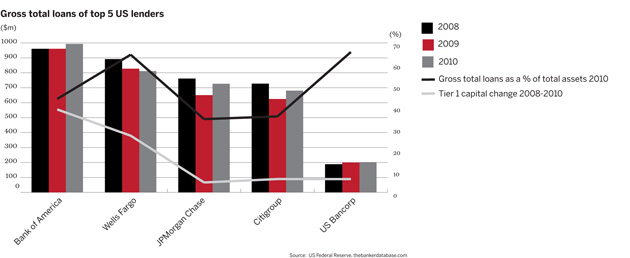Data from the US Federal Reserve reveals that the five largest US lenders did not drastically reduce lending over the past three years as expected.
The figures challenge the assumption that during the financial crisis US banks reduced lending to focus on recapitalising their balance sheets and increase provisions for future loan losses. While the data does not differentiate between domestic and international lending portfolios, lending growth has resumed and banks have started to reduce the amount set aside to cover bad loans and losses - a sign that many banks are now on an even financial footing, with all top five banks having paid back the money injected by the US government.
Many US banks shored up Tier 1 capital levels to offset bad loans, with Bank of America and Wells Fargo increasing their Tier 1 capital by 38.85% and 26.57%, respectively, between 2008 and 2010. However, much of this growth can be explained by Bank of America’s acquisition of Merrill Lynch and Wells Fargo acquisition of Wachovia.




